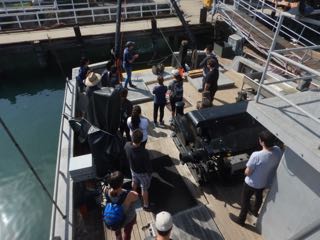
-
| 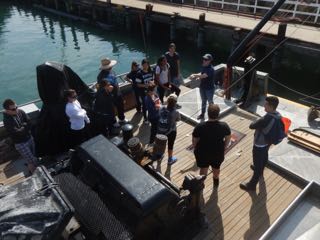
-
| 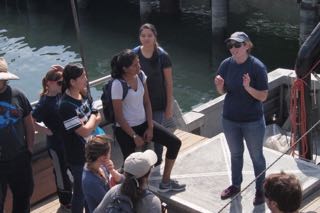
-
|
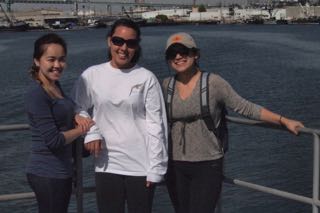
-
| 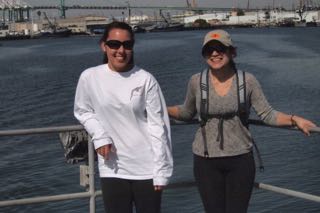
-
| 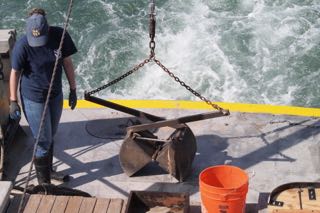
-
|
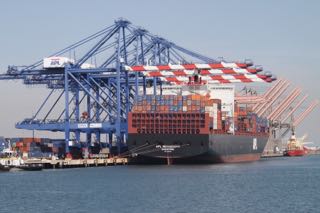
-
| 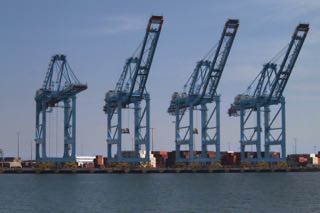
-
| 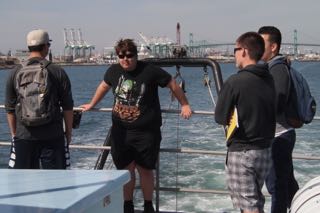
-
|
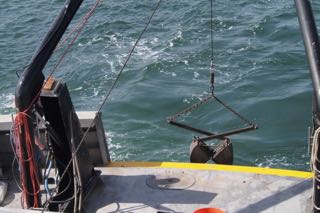
-
| 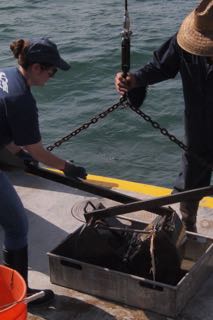
-
| 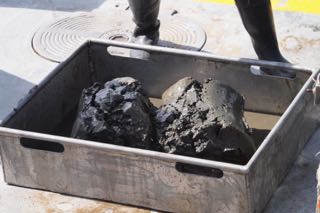
-
|

-
| 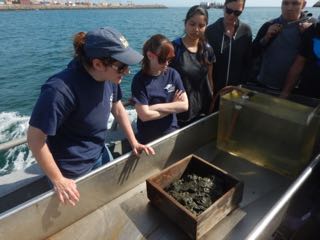
-
| 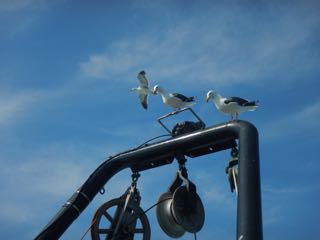
-
|
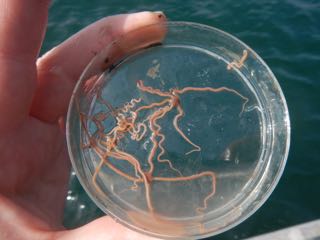
Tentative: Amphiodia urtica, which has a planktotrophic ophiopluteus larval stage
| 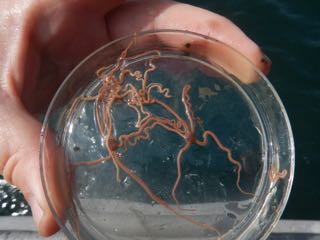
-
| 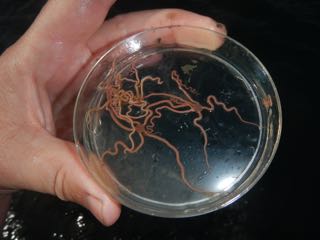
-
|
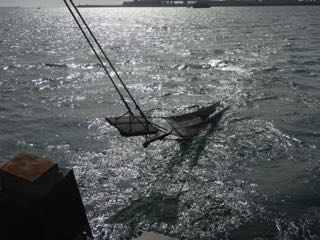
-
| 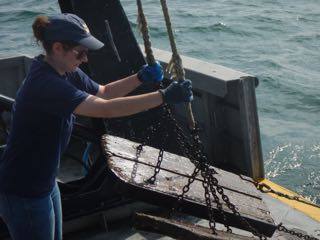
-
| 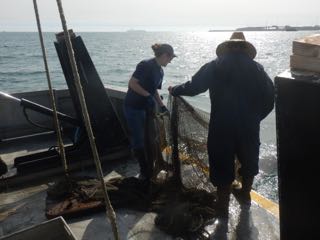
-
|
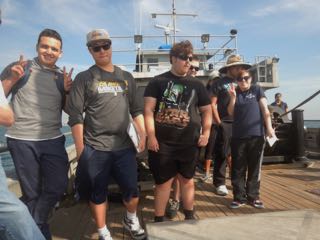
-
| 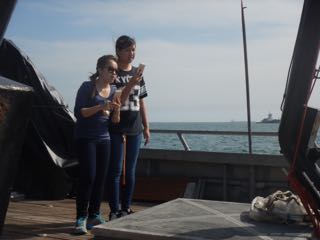
-
| 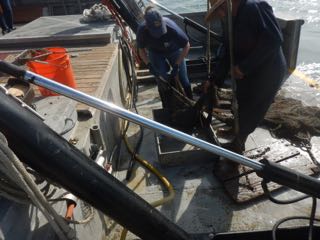
-
|
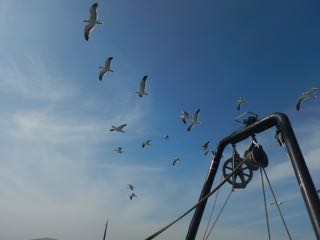
-
| 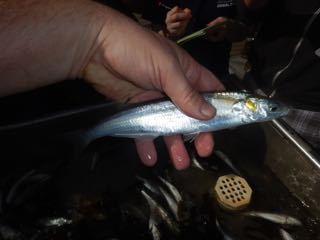
-
| 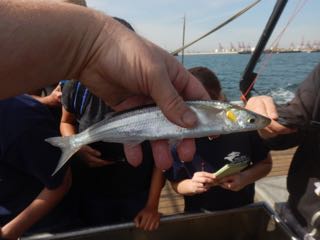
-
|
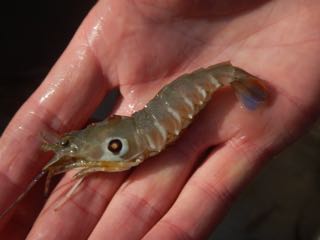
spot prawn (Pandalus platyceros)
| 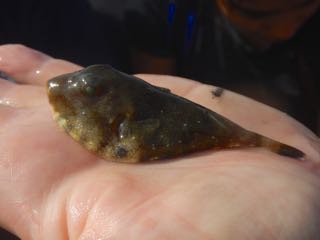
This is the first time I have observed pufferfishes in otter trawls in this area. These are generally more southern fish and their presence in Los Angeles Co. could be a consequence of the current El Niño conditions.
| 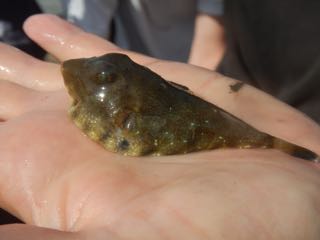
-
|
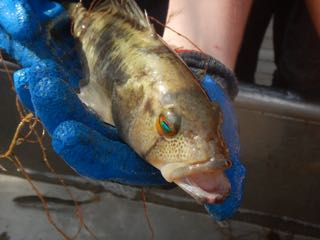
Paralabrax maculatofasciatus(spotted sand bass)
| 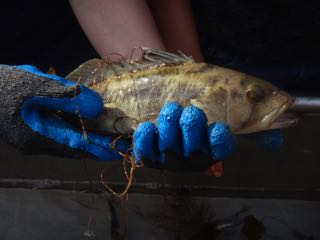
-
| 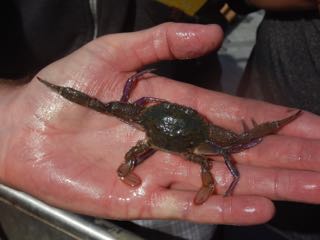
-
|
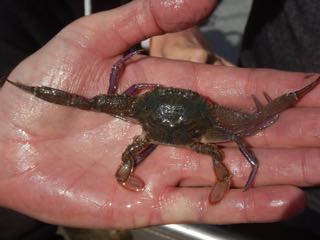
-
| 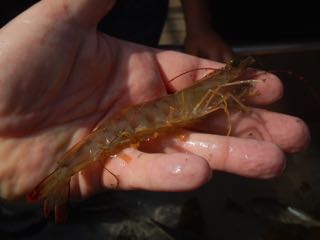
The café brown shrimp (Penaeus californiensis) is reported from southern California but is more common in Mexico.
| 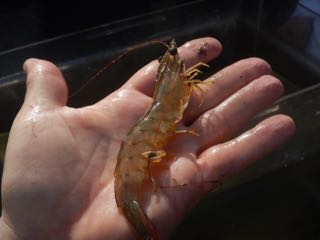
-
|
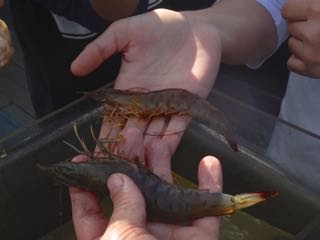
-
| 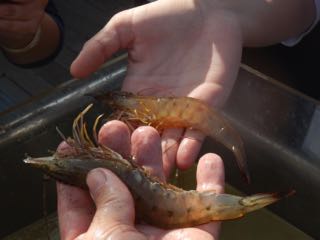
-
| 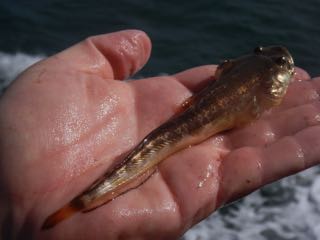
-
|
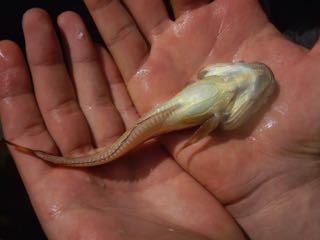
Porichthys myriaster (Specklefin midshipman)
| 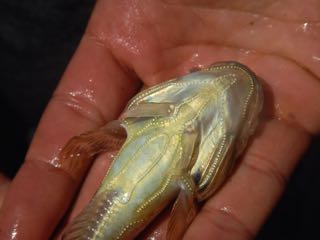
-
| 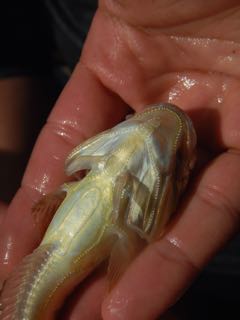
-
|
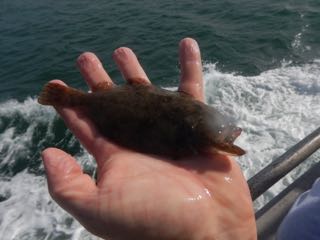
-
| 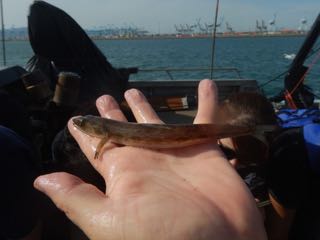
-
| 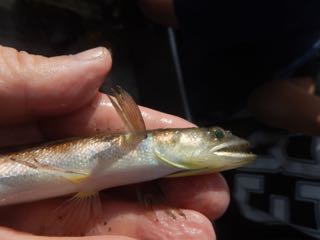
California lizardfish (Synodus luciocepsis)
|
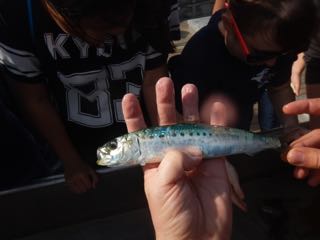
Pacific sardine (Sardinops sagax caerulea)
| 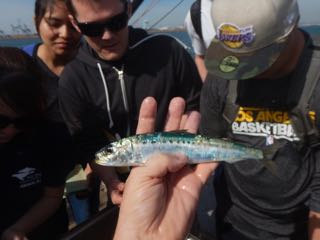
-
| 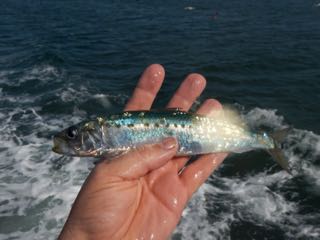
-
|
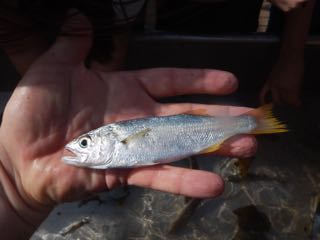
Seriphus politus (queenfish)
| 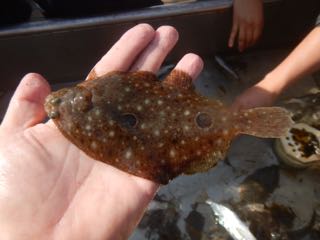
Xystreurys liolepis (fantail sole or fantail flounder)
| 
-
|
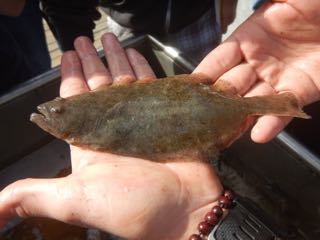
juvenile Paralichthys californicus (California halibut)
| 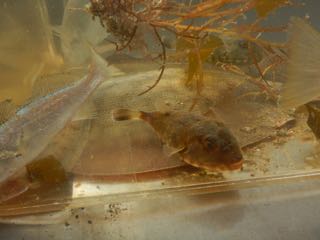
-
| 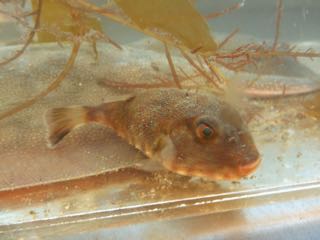
-
|
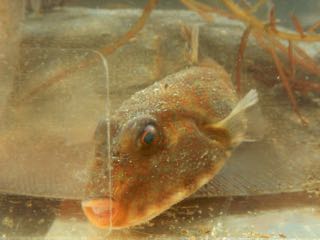
-
| 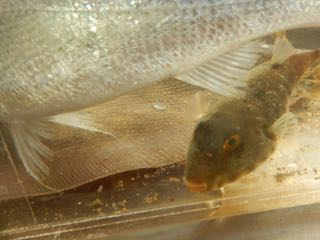
-
| 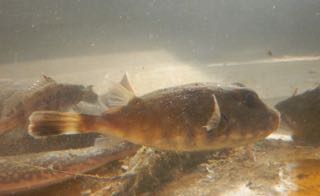
-
|
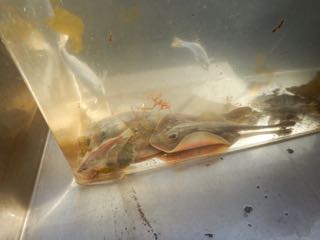
round stingray (Urolophus halleri)
| 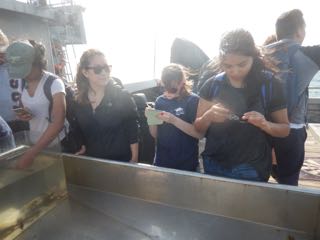
-
| 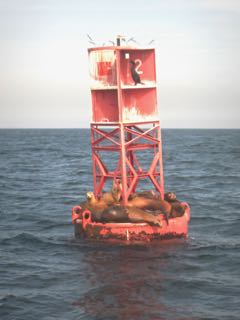
-
|
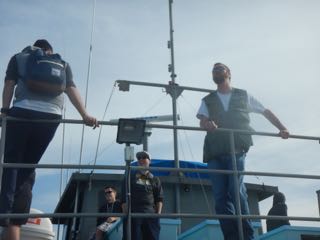
-
| 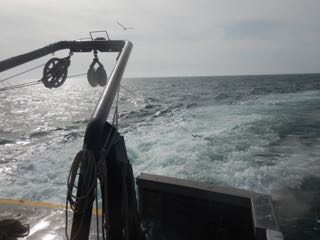
-
| 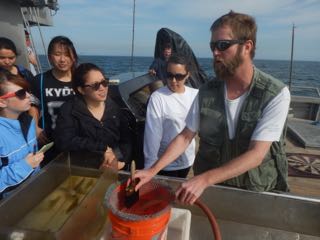
-
|
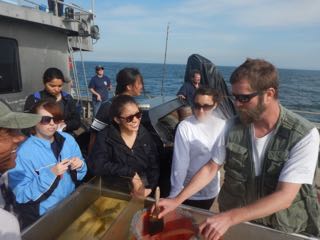
-
| 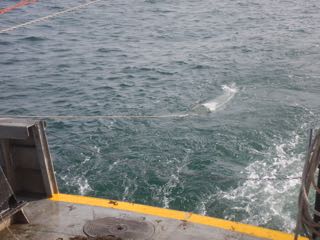
-
| 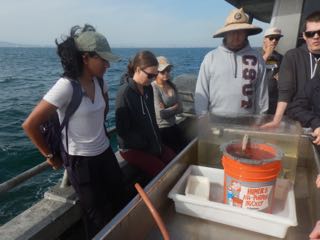
-
|
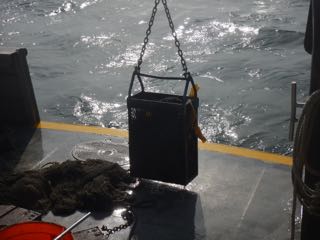
Three rock dredges: 33° 40.400' N 118° 13.426' W to 33° 40.588' N 118° 13.296' W; 33° 40.388' N 118° 13.489' W to 33° 40.485' N 118° 13.212' W; 33° 40.475' N 118° 13.522' W to 33° 40.798' N 118° 13.348' W; no depth recorded but probably about 28m.
| 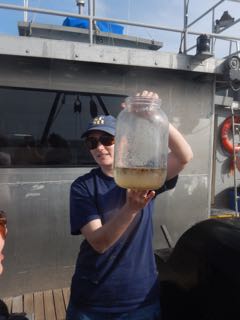
-
| 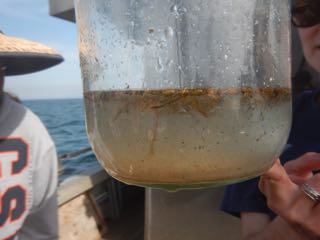
-
|
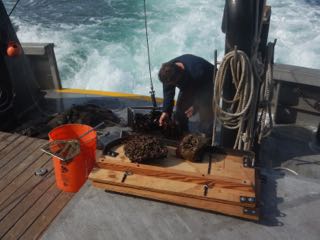
-
| 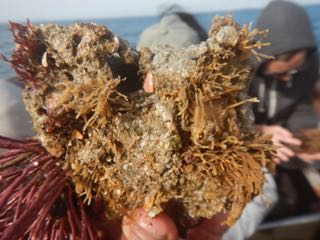
-
| 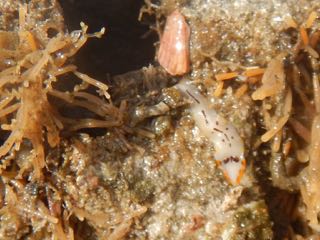
-
|
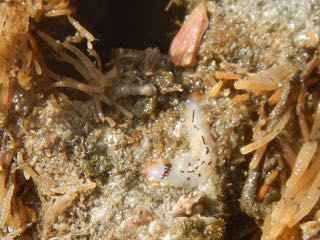
-
| 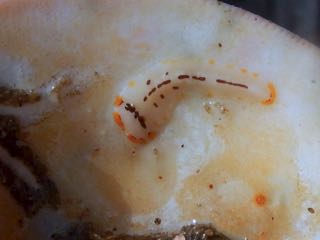
-
| 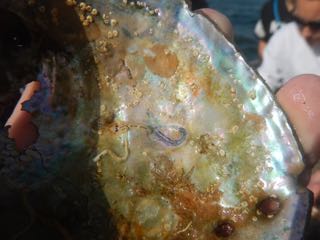
-
|
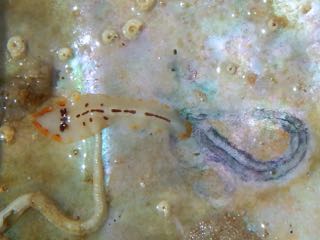
Stylochus insolitus Hyman, 1953, ID by Marcela Bolaņos from Colombia, who remarked that the
single specimen studied by Libbie Hyman, also from near San Pedro, was long preserved so lacked the orange color seen here.
This seems to be one of the few times this species has been observed. Hyman was an influential biologist who published a popular lab manuals whose royalties allowed her financial freedom to undertake a classic multi-volume treatise on the invertebrates, as well as many important monographs on flatworms and hydroids. See her amazing autobiographical essay and her description of this species on p. 289 of 1953 monograph on The polyclad flatworms of the Pacific coast of North America.
| 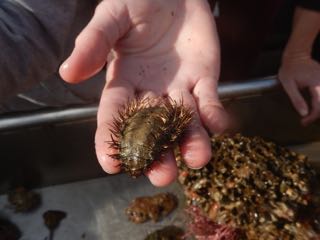
This polychaete "sea mouse" belongs to the family, Aphroditidae. Light and Smith (2007) cite Hartman (1968; Atlas of the Errantiate Polychaetous Annelids from California...) and Blake (1995; in Taxonomic Atlas of the Santa Maria Basin...) for keys to species, but list two genera, Aphrodita and Laetmonice, as occurring in the subtidal off California, including the following four species of Aphrodita: A. armifera Moore, 1910; A. castaea Moore, 1910; A. parva Moore, 1905 (possibly a juvenile of A. japonica); and A. refulgida Moore, 1910.
| 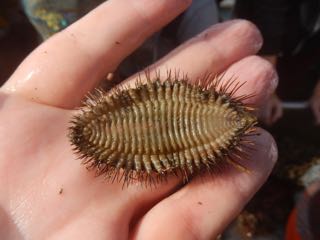
-
|
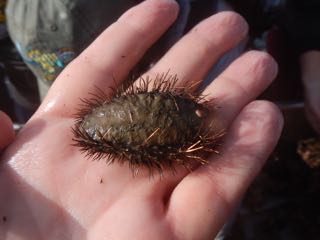
-
| 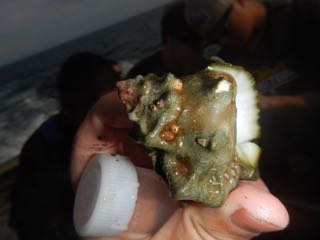
-
| 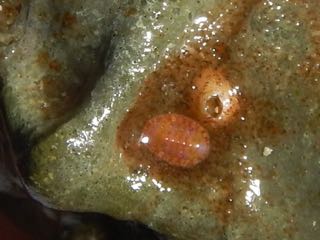
Altogether we found about eight species of chitons.
|
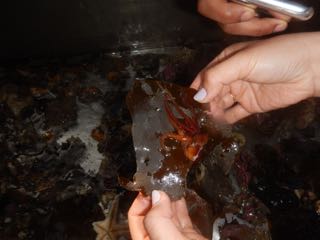
red octopus (Octopus rubescens
| 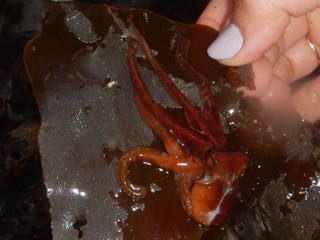
-
| 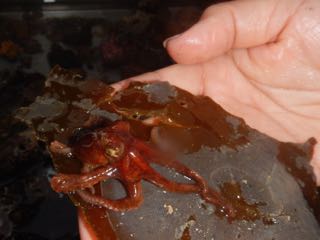
-
|
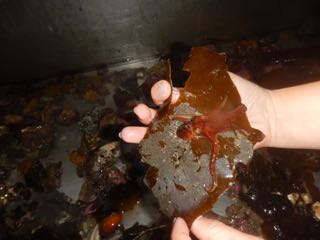
-
| 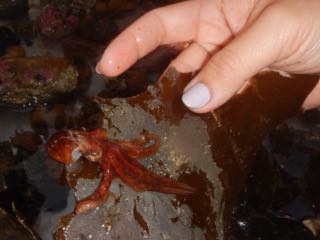
-
| 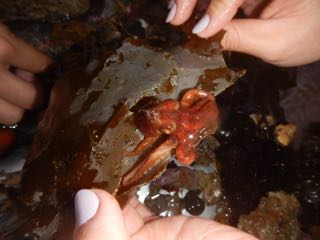
-
|
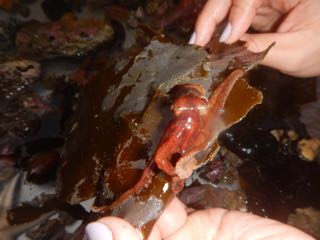
-
| 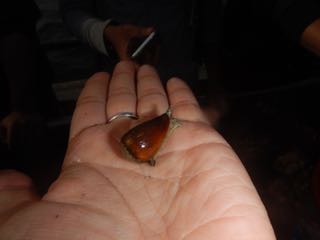
-
| 
California cone snail (Californiconus californicus, formerly Conus californicus)
|
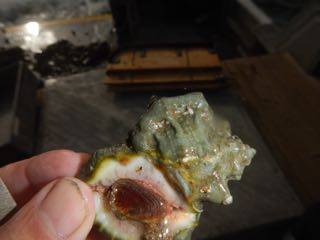
This and a couple other California frog snails (Crossata californica,
or controversially the same as C. ventricosa described from South America) has some tiny associated ectoparasitic snails, Chrisallida sp. (Pyramidellidae).
According to an expert on these pyramidellids, Patrick LaFollette, this is a new association host species for these snails,
which were already known to occur on many of our southern Californian intertidal snails (see here)
| 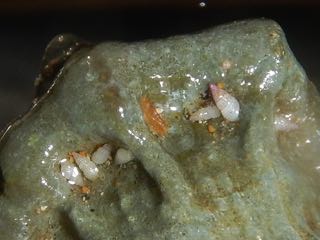
-
| 
-
|
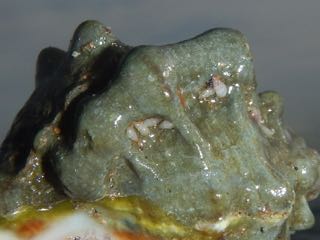
-
| 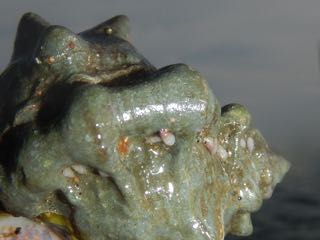
-
| 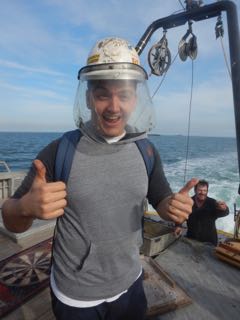
-
|
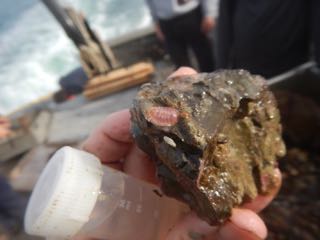
-
| 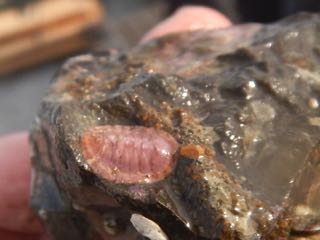
-
| 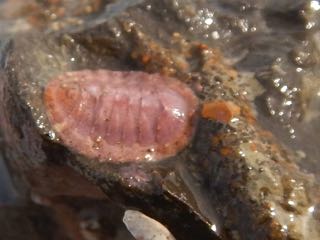
-
|
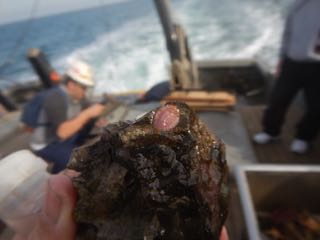
-
| 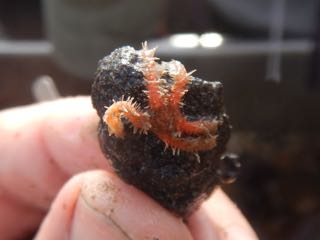
-
| 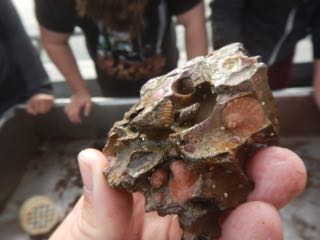
-
|
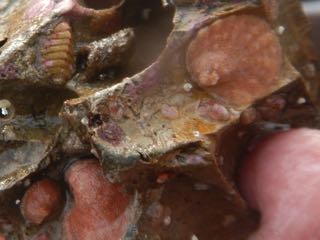
-
| 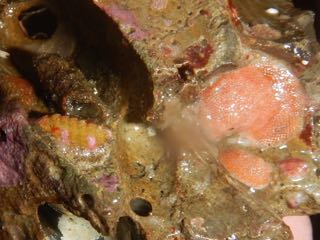
The bryozoan-encrusted limpet-shaped gastropods to the right of the chiton are
Crepipatella lingulata (Calyptraeidae), which are slipper-limpet snails that suspension feed with their gill.
It is typical to find these snails encrusted with these specific bryozoans but I am not sure of the bryozoan species.
| 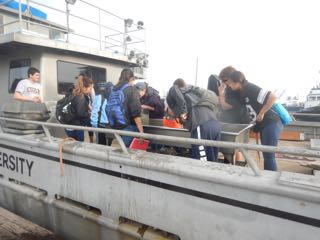
-
|
 Under Construction!
Under Construction! Under Construction!
Under Construction!